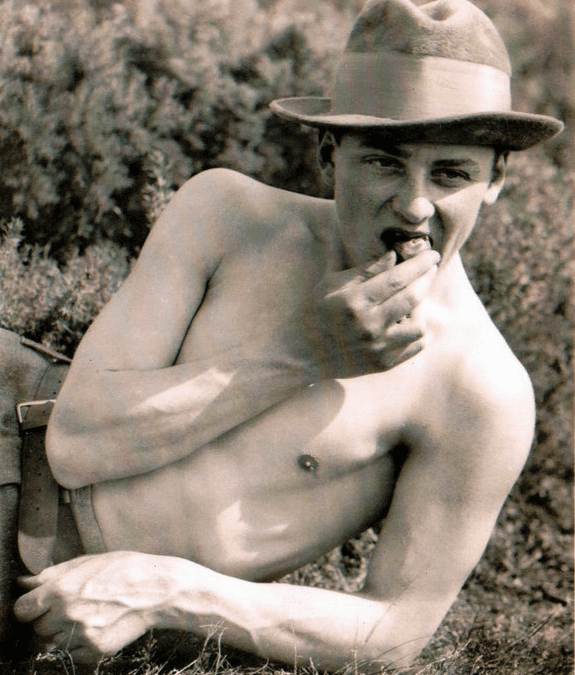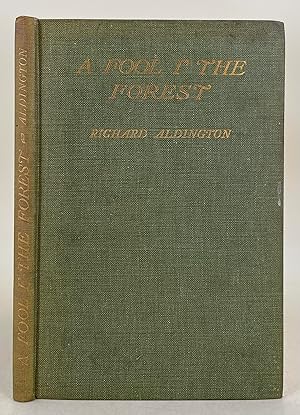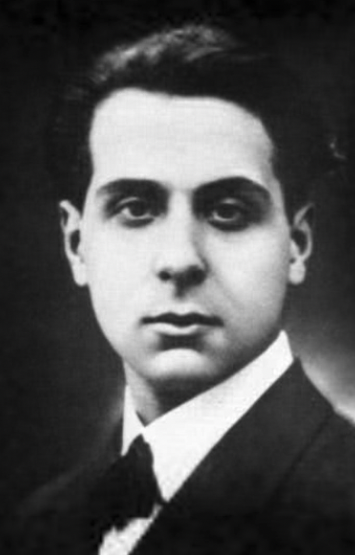Report of the Thirty-First Meeting of the London D. H. Lawrence Group
Shirley Bricout
Rock Imagery in ‘The Escaped Cock’
Thursday 25th January 2024
By Zoom
18.30-20.00 UK time
ATTENDERS
30 people attended, including, from outside of England, Shirley Bricout in Vannes, Brittany, Robert Bullock in Paris, Shanee Stepakoff in Connecticut, Jim Phelps in Cape Town, Leila Stegemoeller in Santa Barbara, and Monserrat Manresa in Barcelona.
INTRODUCTION
Shirley’s talk argued that in ‘The Escaped Cock’ of 1929, Lawrence’s idea of a resurrection in the flesh, granting Jesus a further life on earth, hinges on rock imagery. The story, which was later known as ‘The Man Who Died’, was summarized by Lawrence in a letter to Earl Brewster of 3rd May 1927: ‘I wrote a story of the Resurrection, where Jesus gets up and feels very sick about everything, and can’t stand the old crowd any more – so cuts out – and as he heals up, he begins to find what an astonishing place the phenomenal world is, far more marvelous than any salvation or heaven’ (Letters VI 50). Shirley posited that geological features, embedded in the Biblical account that Lawrence undertook to rewrite, are retained and imaginatively transformed to break away from conventional creeds. Her reading of geological features in the story demonstrates how they foreground the corporeality of the resurrection to the flesh that the story celebrates.
READING
Shirley used the Cambridge edition of the short story, pages 123-163 in The Virgin and The Gipsy and Other Stories, eds. Michael Herbert, Bethan Jones and Lindeth Vasey (Cambridge UP, 2006), and the King James Version of the Bible to quote from the Gospels according to Matthew (28:1-7), Mark (16:1-7), Luke (24: 1-10) and John (20: 1-12) and other verses.
BIOGRAPHY
Shirley Bricout is a postdoctoral researcher affiliated to the University Paul-Valéry Montpellier 3. Her interests lie in D.H. Lawrence’s responses to the Bible, the topic of her 2015 book Politics and the Bible in D. H. Lawrence’s Leadership Novels. She also wrote the dictionary entry devoted to Lawrence in La Bible dans les littératures du monde (The Bible in World Literature), published in 2016, and contributed a chapter, ‘Biblical Aesthetics,’ to The Edinburgh Companion to D. H. Lawrence and the Arts, published in 2020. She has guest-edited a special issue of the Journal of the Short Story in English (no. 68) devoted to Lawrence, and has contributed over thirty articles and book reviews to peer-reviewed journals.
PRESENTATION
NB The article about geology in ‘The Escaped Cock’, for which the talk summarised below was work in progress, has been published online here by the Journal of the Short Story in English.
Shirley started by noting that Lawrence was often likend to Christ by those who knew him, including John Middleton Murry, who presented him as inversion of Christ, and as someone who hated love. In ‘The Escaped Cock’, Lawrence’s revision of Christ’s message is matched by a revision of his story, of which there had already been several written over the preceding century (for example Samuel Butler’s ‘The Fair Haven’ of 1873; when he was twenty-two Lawrence read Ernst Renan’s La Vie de Jesus). The story was partly inspired by an occasion on which Lawrence and Earl Brewster (to whom the story is dedicated) saw a toy rooster, escaping from an egg, in a shop window. Lawrence’s cock reprises that in the gospels, which crows at Peter’s denials precisely when Jesus is fettered. ‘The Escaped Clock’ was, however, changed to the title ‘Resurrection’ for the cover (though not the interior) of the journal Forum which first published it, in order to avoid the phallic pun. In the month before he died, Lawrence finally agreed to change the title to ‘The Man Who Died’.
Shirley argued that rock imagery is as crucial to the story as it is to Biblical narratives of the death and resurrection. Altogether, the Bible contains much geological imagery; the Old Testament has earthquakes and rent rocks; rocks are rent again at the crucifixion, and are rolled onto, and away from, the mouth of Jesus’s tomb. Whereas all of the gospels mention the tomb, only Matthew mentions an earthquake as dislodging the stone. In ‘The Escaped Cock’ there seems to be an earthquake too, although in the story’s first draft the Jesus-figure pushes the rock away himself, and the visual perspective is from inside the tomb.
Rocks change their aspect radically in Part 2 of the story, when the action shifts to Sinai. There they become phallic and yonic symbols, and are soft. The Jesus-figure finds shelter in a cave which contrasts to his former tomb by virtue of being womb-like. Correspondingly his lover, the priestess of Isis, feels to him like ‘the soft white rock of life … The deep-folded, penetrable rock of the living woman!’ This is a transition from the universe of the Gospels to that of The Golden Bough. But the implication, as the Jesus-figure sails away at the end of the story, is that he will again face the tyranny of material existence, and that the rocks will become hard literal again. Shirley concluded by noting that Lawrence was called a ‘tablet-breaker’ for the writing of this story.
DISCUSSION
Keith Cushman noted that Lawrence cooperated with the publication of a 1929 luxury Black Sun Press edition of this story – 450 copies plus 30 on vellum, signed by himself.
Kathleen Vella wondered whether Lawrence had intended the story to shock, as she herself, a Catholic, had been shocked by it; Shirley thought this was the case. Kathleen observed that Lawrence’s grandfather had lived in a small cottage by a quarry, where Lawrence blackberried, and which he had found a safe haven. Returning to it later in life, ‘the living rock’ reminded him of flesh, resulting in the visionary ‘Autobiographical Fragment’, first published in 1936. Shirley added that Lawrence similarly found life in the rock of the Etruscan tombs.
Philip Bufithis wondered whether Lawrence was influenced by the gnostic gospels, such as that of Thomas. Shirley didn’t know. He observed that in this gospel, Jesus has a family, and that this inspired Nikos Kazantsakis’s The Last Temptation of Christ – a successor-text to ‘The Escaped Cock’. Maria Thanassa agreed that there were many similarities between Kazantsakis’s and Lawrence’s theologies, responses to Nietzsche, and emphases on corporeality, Kazantsakis having been excommunicated by the Greek Orthodox Church. Catherine Brown added that Lawrence’s introduction to Dostoevsky’s ‘The Grand Inquisitor’, which was one of the last things he wrote, also involved Lawrence in a revolutionary rewriting of Christ’s story. John Pateman observed that Lawrence’s story presents a shift from Christian to pre-Christian belief systems, such as also occurs in The Plumed Serpent. Shirley agreed that Lawrence tried this shift out first in a Mexican, then in an Egpytian, setting.
Catherine observed the oddity of the verb form of the final title, ‘The Man who Died’, which shuns the use of the pluperfect (‘The Man who had Died’) which would have pointed to resurrection. As it is, the title is only the story so far; the story itself is the continuation. Beyond that, the title makes the fact of death sound exceptional, as though Jesus can be distinguished from other men by virtue of dying. Vic West added, after the meeting, that the avoidance of the pluperfect avoids making the story historical, and therefore universalises it to us all. Yet Lawrence himself could not achieve such a fundamental shift within his own life as does his character – although, as Kathleen Vella observed, Lawrence died many deaths and resurrections, by virtue of approaching death on numerous occasions. Blake Matich pointed out that ‘the man who died’ could be an appellation given to Lawrence’s character by those who knew him: ‘that’s the man who died’; they would not say ‘that’s the man who had died’.
Blake added that he preferred the later title to ‘The Escaped Cock’, which he thought undermined the story’s seriousness. Leila linked the use of the word ‘cock’ to his embrace of four-letter words in Lady Chatterley’s Lover. John Pateman noted Lawrence’s metaphorical use of ‘cock’ in the title of his essay ‘Cocksure Women and Hensure Men’. Shirley added that cocks connoted hens, eggs, and therefore also rebirth. Catherine thought that the story could be read, at a literal level, as one of animal liberation.
Jim Phelps thought that the story actually dismissed the idea of life after physical death, but rather insisted on living life fully in the flesh whilst this was possible; ‘this is the story about a man who lived’. Similarly Bob Hayward, by email after the meeting, stressed the story’s criticism of Christianity, ‘unless you can find a flaw in its art-truth’.




